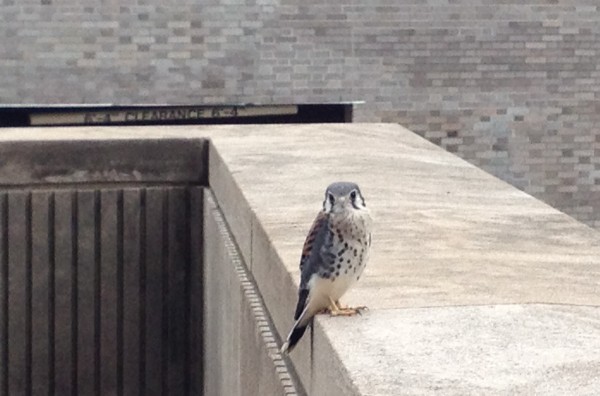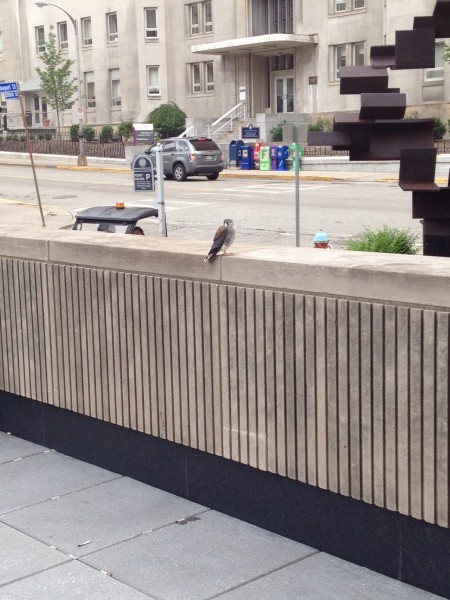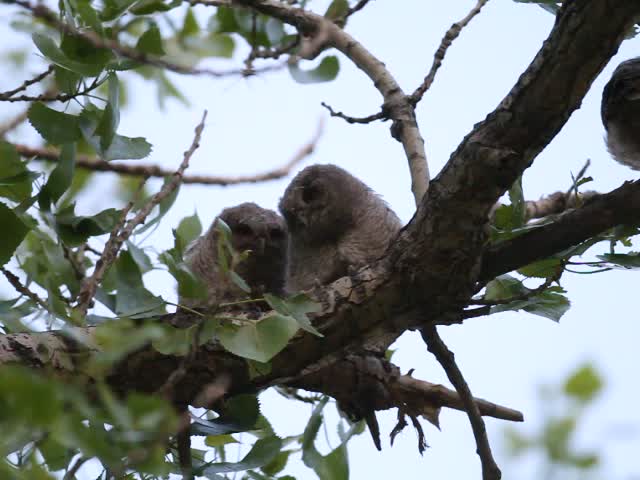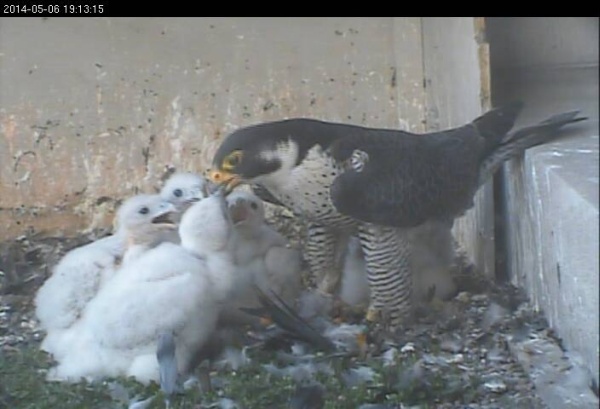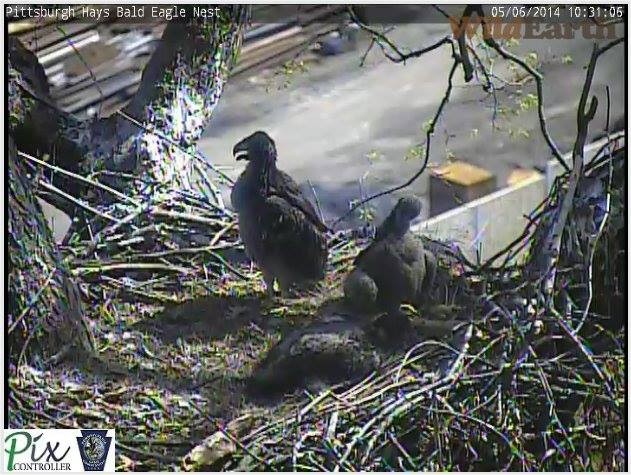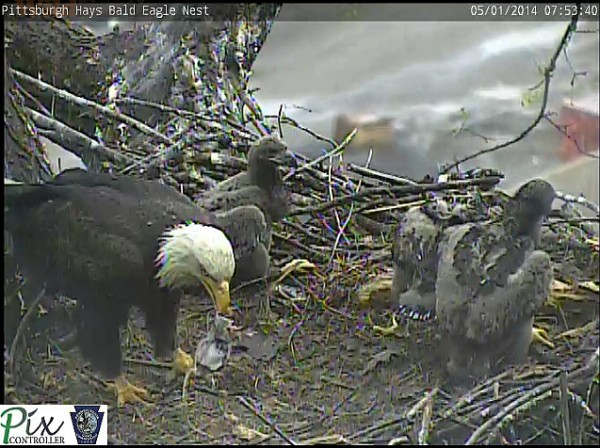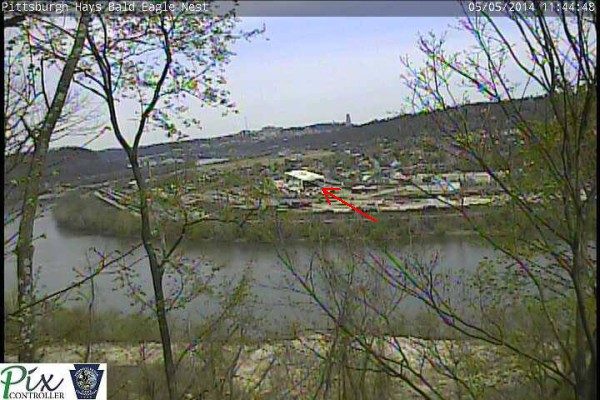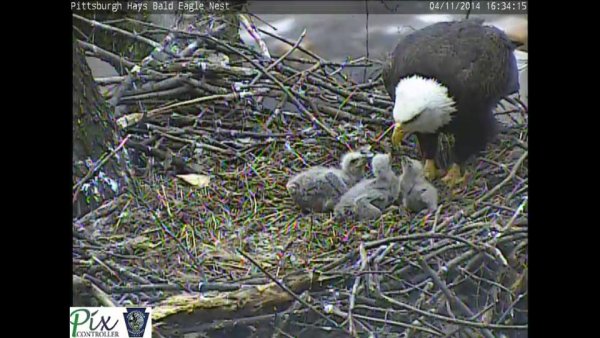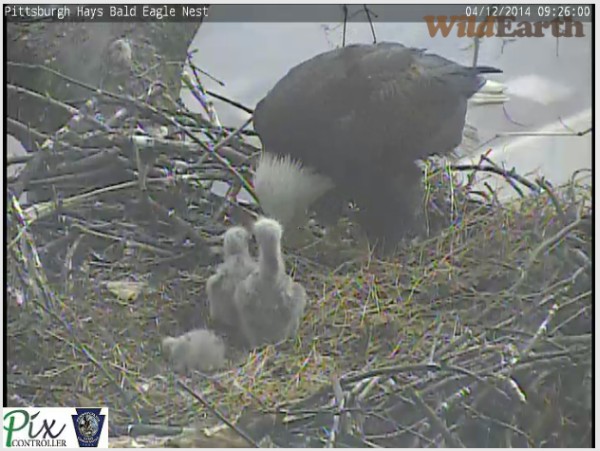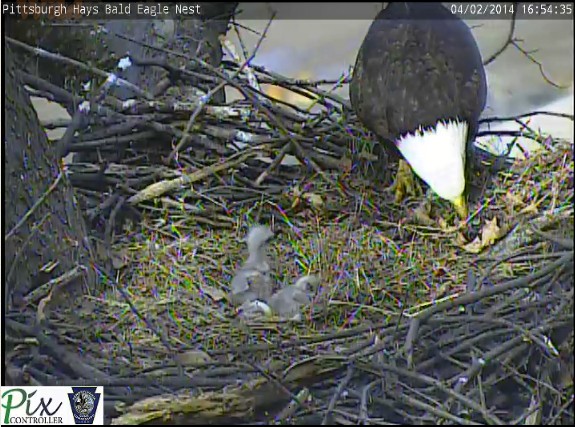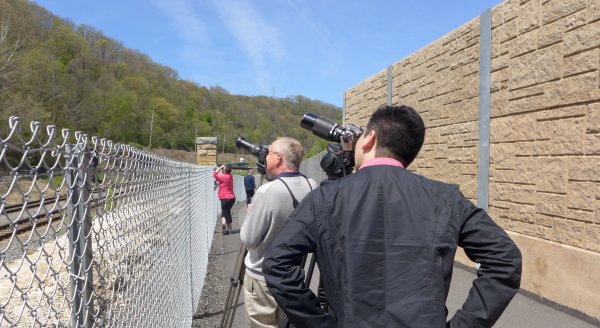
Want to see peregrine falcons or bald eagles? This weekend four sites in the Pittsburgh area have young raptors ready make their first flight.
Watch Peregrines at …
- Monaca-East Rochester Bridge: Four juvenile peregrines are fledging at this site June 11-16. The nest is over water so your watchful presence may save a young peregrine’s life if it lands in the river (you can alert a nearby boater). There are no officially organized times to watch at this bridge though I can tell you I plan to stop by on Saturday. Click here for a map.
- Neville Island I-79 Bridge: One female peregrine is due to fledge from this site June 14-19. Anne Marie Bosnyak and Laura Marshall will be at the adjacent Port Authority Park-n-Ride and Fairfield Inn parking lots for much of the weekend. I plan to visit too at 9:00am Saturday. Watch this blog or Pittsburgh Falconuts for dates and times. Click here for a map.
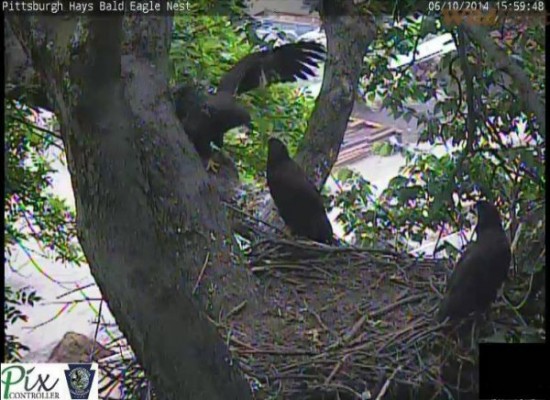
Watch bald eagles at…
- Hays eagle nest: Three eaglets have been flapping like crazy on camera this week so it’s only a matter of time before one of them makes his first flight. Dedicated eagle fans will be watching from the Three Rivers Heritage Bike Trail all weekend. Bob Mulvihill from the National Aviary will be there on SUNDAY at 9:00am. C’mon down any time. It’s free! Click on Bob’s name or here for a map.
- Harmar eagle nest: This nest is much harder to watch since the Hulton Bridge construction closed the small parking lot with the best view. Eagle fans have been known to stand by the side of busy Hulton Road in Oakmont. (Yow!) Before leaf-out there was a good, safe view from the patio behind Oakmont High School. Bring a birding scope and look for watchers on the Oakmont side of the river. If you find a good place to stand, leave a comment with directions.
The weather will be great for Fledge Watching. Let’s get outdoors!
p.s. Happy news from Westinghouse Bridge: On June 11 PGC’s Tom Keller found a day-old hatchling at the Westinghouse Bridge peregrine nest (two eggs still unhatched). PGC will band the chick(s) in 18 to 22 days. Peregrine monitor John English is looking forward to a Fledge Watch in mid July.
(photo of Hays Eagle Watch site by Kate St. John, photo of Hays eaglets from the PixController Hays eaglecam)
